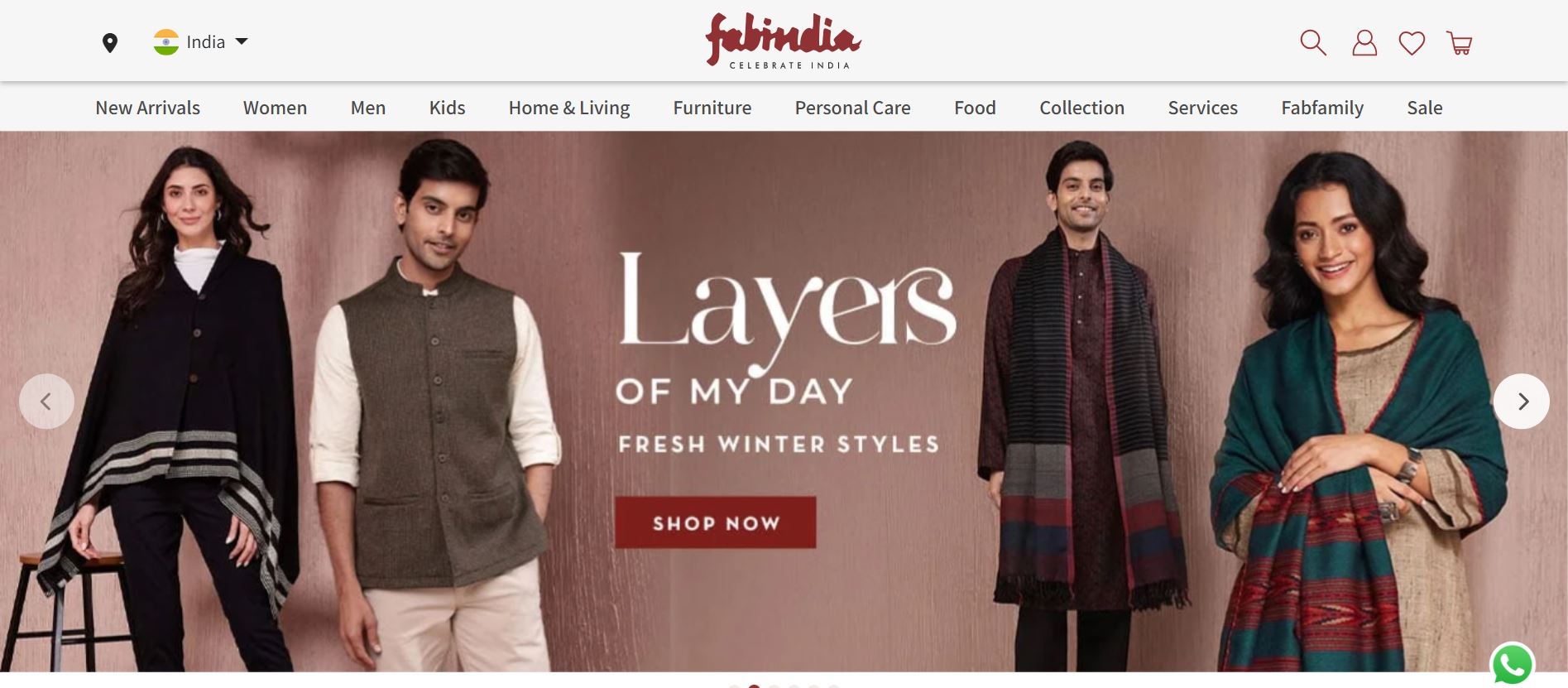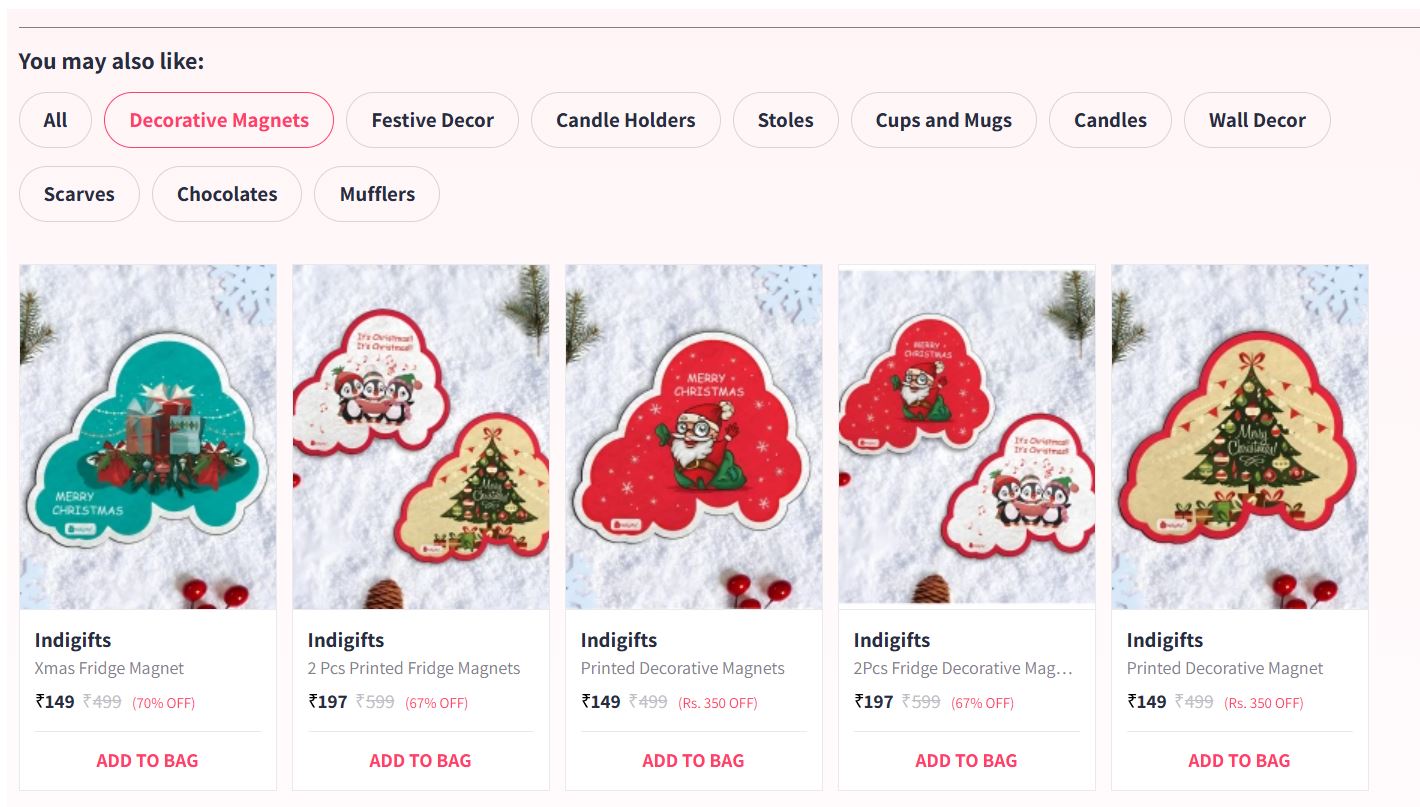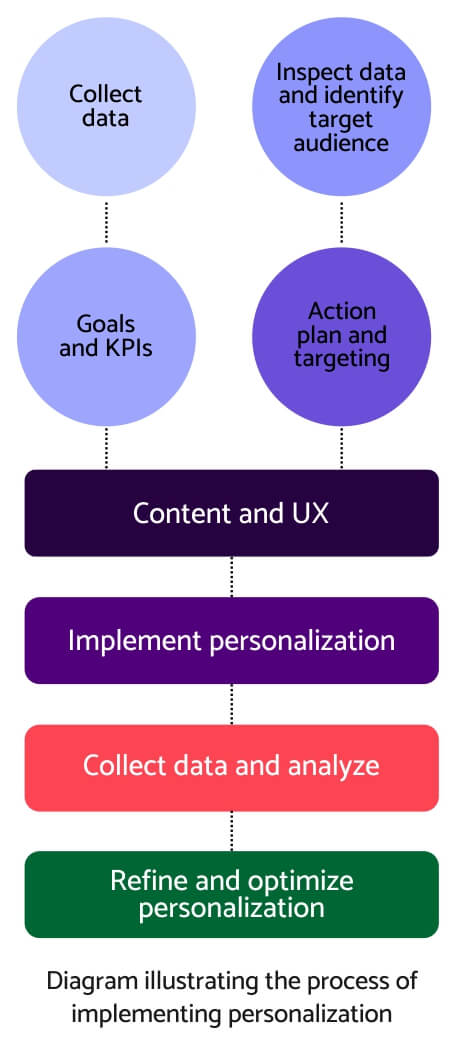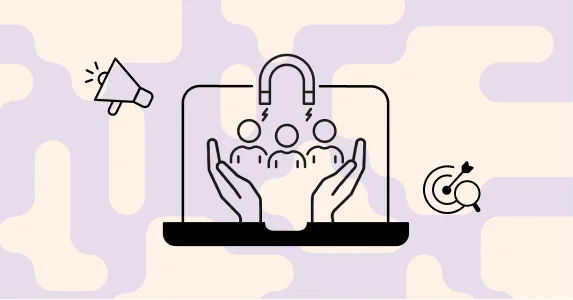Executing online marketing campaigns today demands your messaging to personally connect with your customers. Running digital campaigns without personalization is like a sports coach giving the same advice to every player without considering their unique skills or roles.
Personalization has emerged as a critical strategy that is no longer a luxury but a necessity for brands aiming to enhance customer engagement and loyalty.
This blog post explores personalization, its significance in marketing, and real-world examples demonstrating its effectiveness.
What is Personalization?
Personalization in marketing refers to tailoring content and communications to individual customers based on their preferences, behaviors, and past interactions.
Unlike traditional marketing approaches that adopt a one-size-fits-all strategy, personalization focuses on creating unique experiences for each customer.
A quintessential example of personalization is evident daily on Amazon. You’ll encounter features such as “Inspired by your shopping trends” or receive discounts on products similar to those you’ve previously bought.
Such strategies showcase how personalization enhances your browsing and shopping experience. In fact, research from McKinsey shows that brands that leverage personalization drive revenue potential by as much as 40% compared to those that don’t.
Different Kinds of Personalization
Now that we’ve clarified what personalization entails, it’s time to examine the two primary types of personalization.
a. User-controlled or explicit personalization
This kind of personalization occurs when brands customize their website according to their preferences, such as location, language, or gender.
For instance, the booking platform Bookmyshow allows users to select and set a location-wise personalization as their default. This customization then displays relevant content, such as nearby shows, movies, events and more.

This approach relies on users explicitly sharing their location and personal details to tailor the content and offerings presented to them, streamlining the experience to show only pertinent products or services.
b. Profiled on implicit personalization
This kind of personalization tailors the user experience based on their interactions with your content, services, or products without explicitly requiring them to share their identity.
This approach hinges on user consent to collect behavioral data, which then informs how content is personalized. Platforms like Amazon, Asos, Facebook, Spotify, and Twitter excel in this area by leveraging vast amounts of data to align their offerings with user interests.

Implicit personalization can be divided into further categories, enhancing relevance and engagement by predicting user preferences and behaviors.
1. Behavioral personalization
This tailors experiences based on a user’s browsing behavior and interactions. It employs data to discern interests and build user profiles. A prime example is Netflix, which not only recommends content but also alters its visual presentation according to the user’s history and time of day.

2. Contextual personalization
Contextual personalization tailors the experience based on the user’s specific context while browsing, such as the time of day, their current location, or the weather.
This type of personalization is exemplified by push notifications from brands during different times of the day, season, occasions, etc.

Zomato push notification in the context of Christmas festival

Zomato push notification in the context of time of the day

GIVA push notification in the context of a special occasion anniversary
This method enhances the relevancy of interactions, making digital experiences more intuitive and aligned with the user’s real-time needs.
What elements can you personalize on the website or app?
Now that you understand personalization, it’s time to delve into the practical aspects of personalizing your website or app.
Consider approaching this as a modular project rather than overhauling the entire site. This strategy allows you to customize specific elements based on your audience’s needs, particularly on high-traffic and high-value pages.
Let’s explore the various elements of your website that can be personalized to enhance user experience.
1. Headline or hero image
The headline and hero image are typically the first elements that greet visitors on your website, serving as your initial interaction with potential customers.
Treat this space like a welcoming handshake, tailored to provide precisely the right information to engage the intended audience effectively.
FabIndia effectively utilizes seasonal targeting by showcasing a banner specifically designed for the winter season. This approach leverages the seasonality effect to engage visitors with relevant and timely content during colder months.

Similarly, the banner can be personalized basis the occasion, festival, season and more. This strategic approach ensures a strong first impression, paving the way for further engagement.
2. Product feature page/listing
If a visitor comes to your website and demonstrates specific user preferences, presenting them with products that are similar or tailored to their interests can significantly enhance their engagement.
This strategy is especially beneficial for multi-category retailers or B2C businesses, where personalized content can effectively guide visitors closer to making a purchase decision by addressing their specific needs and interests directly.
3. Product Recommendations
For first-time visitors, you can enhance engagement by inviting them to share their interests, allowing you to tailor recommendations and resources on your site effectively.
For repeat visitors, leverage the data you’ve gathered about their previous interactions, such as pages visited and time spent on each page, to refine their experience further.
This personalized approach enriches the user experience and increases the likelihood of conversion by presenting relevant content that aligns with their specific interests and behaviors.
The Australian health brand, Elite Supplements, exemplifies the benefits of product recommendations tailored to individual needs and preferences.

See how Elite Supplements mastered personalization to achieve a stunning 55.5% increase in revenue.
4. In-cart recommendations
To boost cross-sells and upsells, display recommendations related to the items currently in a customer’s cart. Consider factors like price point, category, past purchases, and wish lists.
For instance, Myntra enhances shopping experiences by suggesting relevant products that complement or enhance the items in a customer’s cart.

5. Cart abandonment message
Reminding users about the items left in their cart can be a strategic move to nudge them toward the completion of their purchase. This not only saves them time during their return visit but also effectively drives conversions by re-engaging them with products they considered previously.
For example, Andamen’s cart abandonment message is uniquely personalized with a friendly tone that nudges users to complete the transaction. The email also contains personalized recommendations to upsell relevant products that go well with the items in the cart.

Experimentation is key when it comes to personalization. Beyond headlines and hero images, consider integrating surveys, signup forms, and timers to further tailor the experience. Let your creativity flow and explore various elements that could be customized to better meet the needs of your customers.
Learn How Andamen achieves 800% ROI with a 30% Revenue Surge using Netcore’s Full Stack Customer Engagement Platform
How to get started with personalization?
Personalization isn’t just for eCommerce; any industry can implement it effectively. It’s crucial to start not just with objectives but also with gathering insights about your visitors. This knowledge forms the basis of a realistic and achievable personalization strategy. Here’s a recommended approach to personalization:

1. Collect data
Data collection is the cornerstone of effective personalization. Here’s a strategic approach to ensure your data enhances your marketing efforts:
- Establish a Data Collection Strategy: Start with a robust plan for data collection. This is essential, as quality data fuels personalization. Methods such as newsletter subscriptions, surveys, email IDs collected at the time of checkout, profile creation, etc., can be used.
- Ensure Data Quality: Gather accurate and relevant data to support your marketing decisions. Go through your data carefully and remove irrelevant or potentially fishy information.
- Compliance with Regulations: Adhere strictly to data protection regulations to maintain trust and legal compliance.
- Unified Data Access: Break down silos within your organization to ensure that all marketing systems have access to a unified data set at decision-making times.
- Real-Time Data Connectivity: Implement systems that can deliver the right data at the right time to create relevant and engaging customer experiences.
These steps will prepare you to handle the complexities of data-driven personalization while ensuring that your efforts are both effective and compliant.
2. Identify the target audience
Once you’ve gathered data from all sources, it’s crucial to clean it and build visitor personas to align data with experiences effectively.
Starting with business logic to segment your audience is advisable, especially if you’re new to this.
Remember, this is not a one-off task—audience behaviors change, necessitating ongoing adjustments. Begin with basic demographics and behavioral data, then incorporate detailed insights like browsing habits, past purchases, and product usage.
But segmentation isn’t personalization. Use it as an initial step to understand and uncover opportunities within your audience. Effective personalization begins broadly and becomes more targeted as you identify where the most value lies.
3. Set goals and KPIs
At this juncture, it’s crucial to align your understanding of your audience with realistic goals and metrics for measurement.
With a comprehensive grasp of your audience data, transition into crafting an actionable plan. Define clear objectives such as increasing user engagement, boosting conversion rates, or enhancing customer retention.
This phase is all about setting attainable targets based on the data-driven insights you’ve gathered, ensuring each goal is specific, measurable, achievable, relevant, and time-bound (SMART). It could be something like:
- Improve conversion rates
- Engage indecisive shoppers
- Encourage repeat purchases
- Drive returning users
- Reduce cart abandonment rate
- Reduce bounce rate
- Increase first-time visitor sales
- Improve customer onboarding
- Get feedback or product reviews
To make it more specific, here are some questions you should consider asking with regards to personalization
- How can I improve the recommendations? – What goes well with what, what color/size/brand the user is specifically looking for, similar users also purchased, what you might like, etc.
- What is that one thing if customized for every customer can improve the overall experience? Is it applying the coupons automatically, personalized forms, stock alerts, or triggered notifications?
- What offers will be relevant to the visitors?
- Do my users have any preferred language?
- What do they prefer in terms of style or price point?
- What products or services should I prioritize basis the visitor data and the search query?
- Should I reach out on exit intent, on-load, on-scroll popups?
4. Determine the plan of action
At this phase, strategize your website’s or app’s personalized journey.
Determine key pages like the homepage, product details, search results, and checkout processes for prioritization.
Consider how your audience navigates your site to tailor the navigation workflow. Additionally, focus on developing targeting logic to connect collected data with the personalized experiences you aim to deliver. This involves a complex blend of strategic planning and technical implementation to ensure a strong return on investment (ROI) from your personalization efforts.
5. Implement the plan with content and UX changes
Now enter the most engaging phase of your web personalization strategy—creating specific experiences.
Given that personalization can involve endless content, start by determining which types suit your goals.
This might include predictive recommendations, context-sensitive messages based on user details like location or industry, or adaptive navigational structures tailored to how users interact with your site.
Employ advanced personalization using a customer engagement platform to recombine existing content elements—like product images or text—to craft numerous variations, enriching the user experience. For instance, altering the header image for different demographics or adjusting the navigation for specific visitor groups enhances relevance and engagement.
How to choose a customer engagement platform for effective personalization?
It’s important to have a customer engagement platform that aligns with your business goals to offer customers the most optimal personalization experience. Consider asking the following questions to choose the best one.
- Can we personalize campaigns on desktop and mobile websites? Explain the process for targeting, content creation, testing, and execution, and provide UI screenshots.
- How is mobile app personalization handled? Detail the steps from targeting to execution and discuss any limitations with screenshots of the UI setup.
- What is involved in tailoring multichannel campaigns? Describe the personalization steps for mobile messaging, push notifications, emails, and other channels with UI screenshots.
- Can offline systems like client-telling or kiosks be personalized? State the possibilities and limitations, and include screenshots of the campaign setup.
- Does the platform support API-driven personalization? Provide details on available APIs and their methods, including API documentation.
- Can we utilize an end-to-end product recommendation engine for creating personalized campaigns across various platforms? Outline capabilities and limitations with UI setup screenshots.
- Is there an option to save personalized content templates within the platform? Describe the extent of personalization and channel limitations.
The Future of Personalization
While personalization has existed for a long time, technological advancements have changed and improved it and how customers interact with brands online. AI and ML have played a huge role here.
Giants like Netflix and Amazon have revolutionized personalization through the early adoption of AI and ML. AI mimics human behavior, offering tools like natural language processing to understand user needs and preferences deeply. Meanwhile, ML tailors communication and product offerings by identifying patterns and optimizing recommendations, enhancing relevance for each user. Together, AI and ML enable marketers to deliver a vast array of tailored experiences simultaneously, showcasing the power of these technologies in personalizing user interactions at scale.
As technology advances, the potential for hyper-personalization—where brands deliver highly tailored experiences at an individual level—will continue to grow. By leveraging AI and machine learning, companies can analyze vast amounts of data to create immersive customer journeys that resonate deeply with consumers.
Conclusion
Effective personalization can significantly enhance user experience and ROI, yet it introduces complexity requiring a strategic approach. This article offers foundational insights into personalization, but it’s just the beginning. When implementing personalization strategies, it’s crucial to maintain subtlety to avoid coming across as invasive. Additionally, managing multi-channel and cross-channel experiences effectively and selecting the right tools are essential for achieving the best outcomes.
Personalization is a vital component of modern marketing strategies. By understanding and catering to individual customer needs, brands can enhance customer experiences, foster loyalty, and drive revenue growth. As we move forward, embracing personalization will be essential for businesses looking to stay competitive in an increasingly individualized marketplace.










